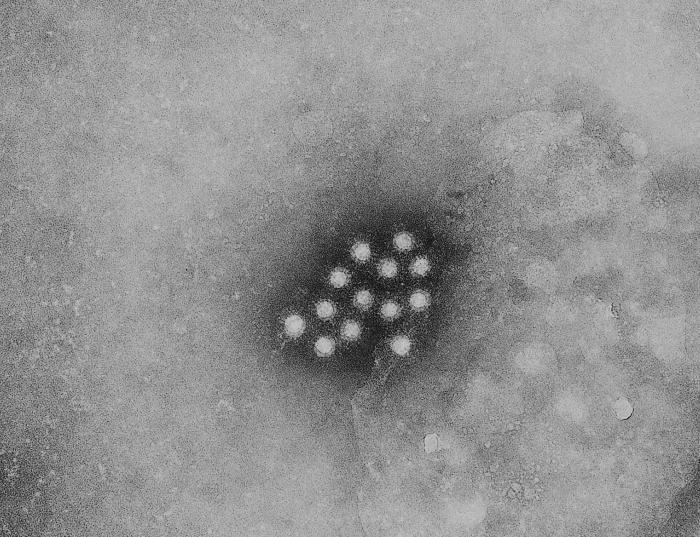Hepatitis A virus
|
Hepatitis A |
|
Diagnosis |
|
Treatment |
|
Case Studies |
|
Hepatitis A virus On the Web |
|
American Roentgen Ray Society Images of Hepatitis A virus |
Editor-In-Chief: C. Michael Gibson, M.S., M.D. [1]; Associate Editor(s)-in-Chief: João André Alves Silva, M.D. [2]
Overview
Hepatitis A infection is caused by the hepatitis A virus.
Taxonomy
Viruses; ssRNA viruses; ssRNA virus; positive-strand viruses; Picornavirales; Picornaviridae; Hepatovirus
Biology
 |
Hepatitis A virus (HAV) is a 27 nm, non-enveloped, icosahedral, ssRNA virus with a single serovar. So far, 4 different genotypes have been identified in hepatitis A viruses, all belonging to the same serotype.[2]
HAV has no lipid envelope and is stable when excreted from the infected liver to the bile to enter the gastrointestinal tract. It has been found to survive in experimentally contaminated fresh water, seawater, wastewater, soils, marine sediment, live oysters, and creme-filled cookies.[3]
HAV is extremely resistant to degradation by environmental conditions, a property that allows its maintenance and spread within populations.[3]
Genome
The HAV genome is encoded in 7474 nucleotides, which are divided into three regions:
- 5' untranslated region, with 742 nucleotides
- Single reading frame encoding a 2227 amino acid polypeptide, with 6681 nucleotides
- 3' noncoding region, with 63 nucleotides
The reading frame encodes a polypeptide that is processed by a viral protease. This process takes place cotranslationally, and leads to the formation of:
Tropism
Similarly to other hepatitis viruses, the hepatitis A virus demonstrates tropism for the liver cells. The hepatocytes represent the predominant site for viral replication.[4]
Natural Reservoir
- Humans are the only natural reservoir of the virus.[5]
- There are no insect or animal vectors.[5]
- A chronic HAV carrier state has not been reported.[5]
References
- ↑ "http://phil.cdc.gov/phil/details.asp". External link in
|title=(help) - ↑ Lemon SM, Jansen RW, Brown EA (1992). "Genetic, antigenic and biological differences between strains of hepatitis A virus". Vaccine. 10 Suppl 1: S40–4. PMID 1335657.
- ↑ 3.0 3.1 "Hepatitis A" (PDF).
- ↑ Lemon SM (1997). "Type A viral hepatitis: epidemiology, diagnosis, and prevention". Clin Chem. 43 (8 Pt 2): 1494–9. PMID 9265900.
- ↑ 5.0 5.1 5.2 "Hepatitis A".